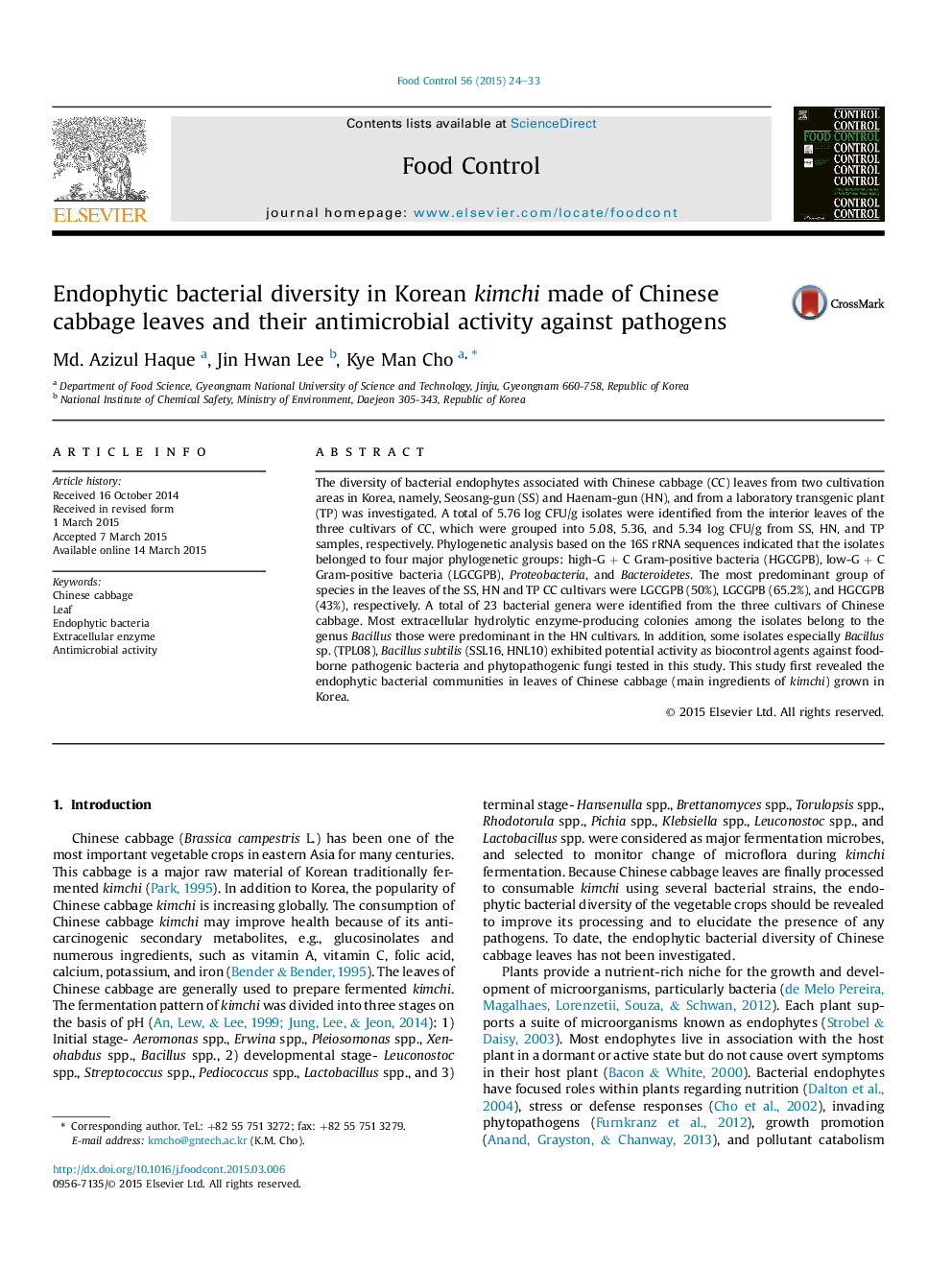| Article ID | Journal | Published Year | Pages | File Type |
|---|---|---|---|---|
| 4559212 | Food Control | 2015 | 10 Pages |
•We revealed endophytic bacterial communities from leaves of Chinese cabbage cultivars (SS, HN, TP).•Total number of isolates were larger in HN cultivar than those in the SS, and TP cultivars.•Endophytes were belonged to high-G + C gram-positive bacteria, low-G + C gram-positive bacteria, Proteobacteria, and Bacteriodetes.•A total of 23 bacterial genera were identified from the leaves of Chinese cabbage cultivars.•Bacillus sp. (TPL08) and Bacillus subtilis (SSL16, HNL10) exhibited remarkable growth inhibition of pathogenic microorganisms.
The diversity of bacterial endophytes associated with Chinese cabbage (CC) leaves from two cultivation areas in Korea, namely, Seosang-gun (SS) and Haenam-gun (HN), and from a laboratory transgenic plant (TP) was investigated. A total of 5.76 log CFU/g isolates were identified from the interior leaves of the three cultivars of CC, which were grouped into 5.08, 5.36, and 5.34 log CFU/g from SS, HN, and TP samples, respectively. Phylogenetic analysis based on the 16S rRNA sequences indicated that the isolates belonged to four major phylogenetic groups: high-G + C Gram-positive bacteria (HGCGPB), low-G + C Gram-positive bacteria (LGCGPB), Proteobacteria, and Bacteroidetes. The most predominant group of species in the leaves of the SS, HN and TP CC cultivars were LGCGPB (50%), LGCGPB (65.2%), and HGCGPB (43%), respectively. A total of 23 bacterial genera were identified from the three cultivars of Chinese cabbage. Most extracellular hydrolytic enzyme-producing colonies among the isolates belong to the genus Bacillus those were predominant in the HN cultivars. In addition, some isolates especially Bacillus sp. (TPL08), Bacillus subtilis (SSL16, HNL10) exhibited potential activity as biocontrol agents against food-borne pathogenic bacteria and phytopathogenic fungi tested in this study. This study first revealed the endophytic bacterial communities in leaves of Chinese cabbage (main ingredients of kimchi) grown in Korea.
